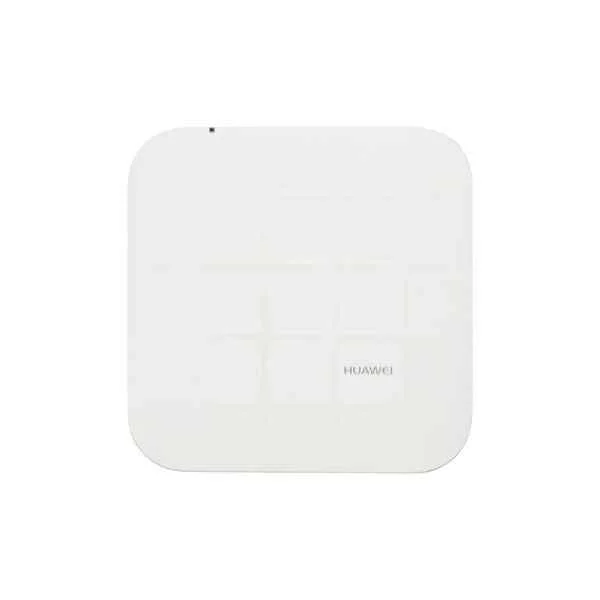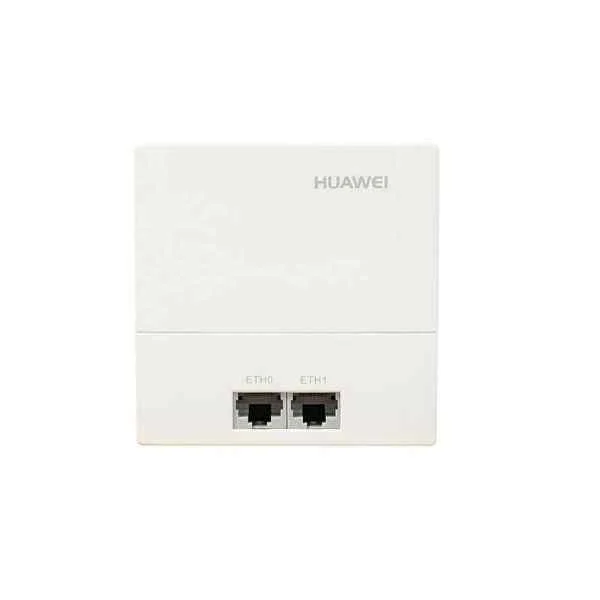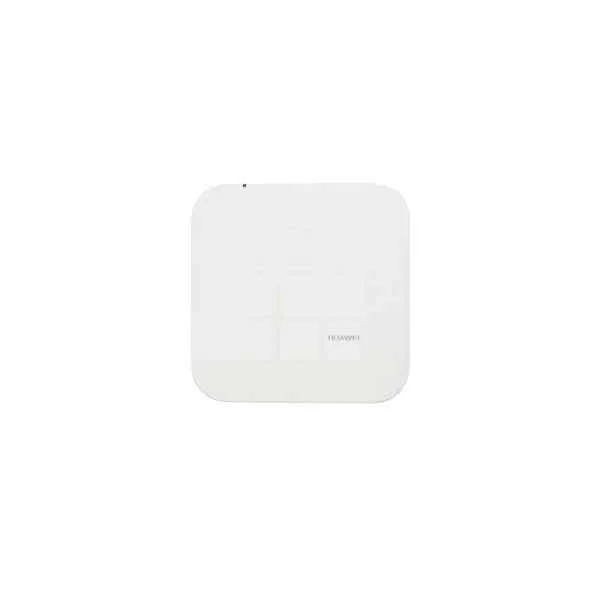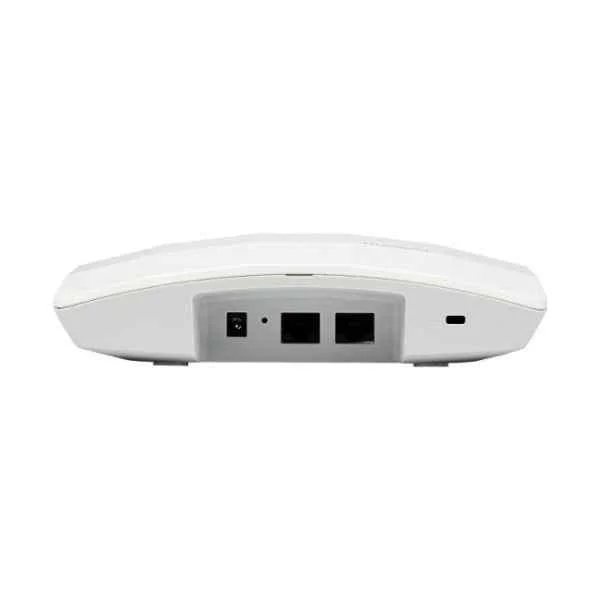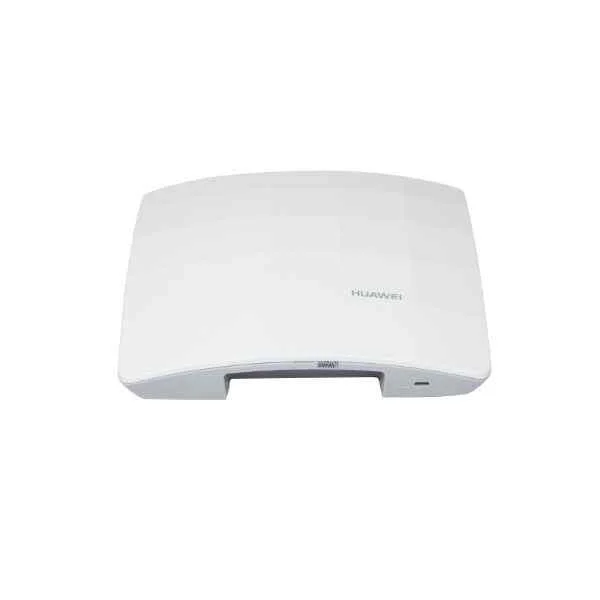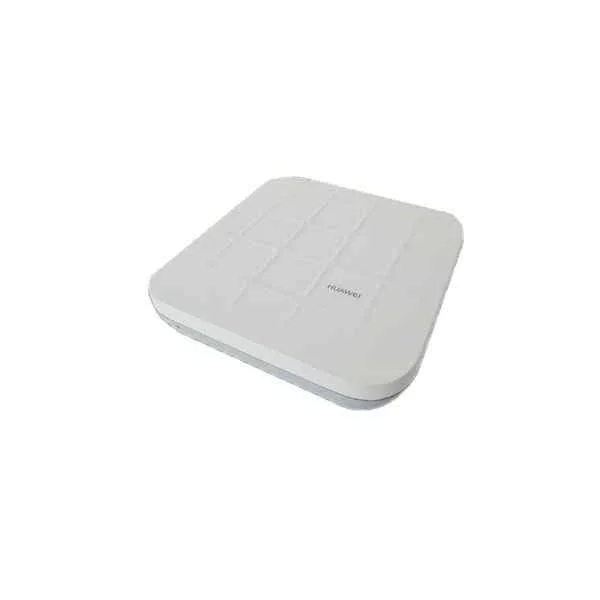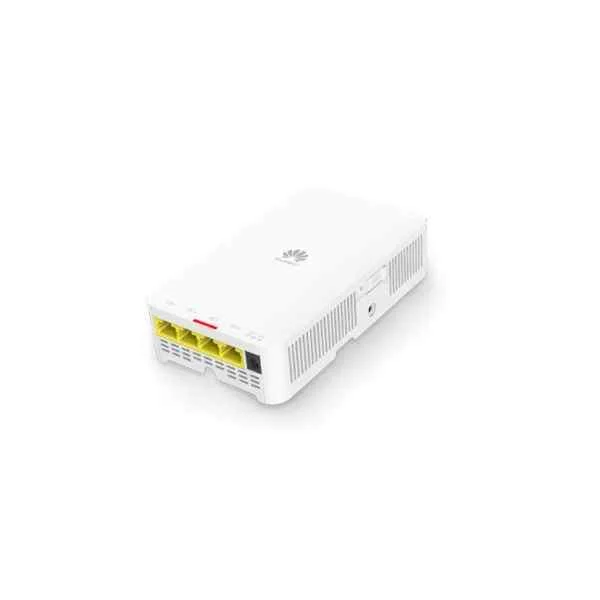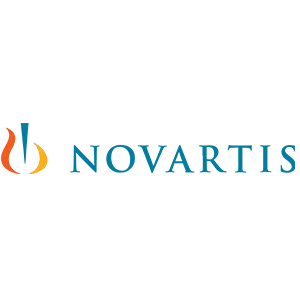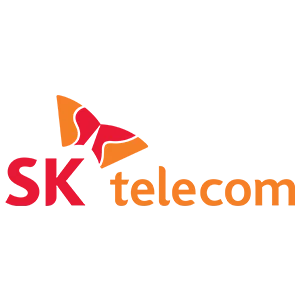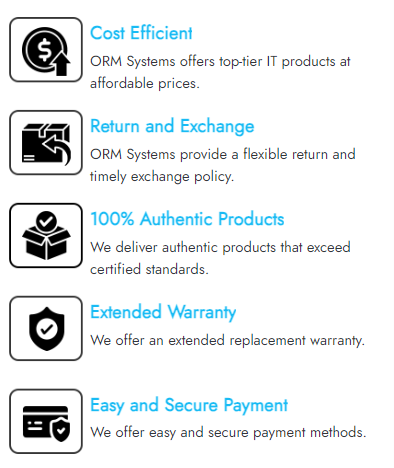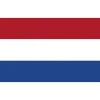Overview Of AP6750-10T
No Data FoundSpecification Of AP6750-10T
AP6750-10T Datasheet
AP6750-10T Specification
AP6750-10T Specification |
|
|
Dimensions (H x W x D) |
47 mm x 220 mm x 220 mm |
|
Weight |
1.2 kg |
|
Interface type |
2 x 10/100/1000M adaptive Ethernet ports (RJ45) 1 x USB port |
|
Built-in Bluetooth |
BLE5.0 |
|
External IoT module |
Support for IoT modules expanded through the USB port |
|
LED indicator |
Indicates the power-on, startup, running, alarm, and fault states of the system. |
|
Power input |
€¢ DC: 12 V ± 10% €¢ PoE power supply: in compliance with 802.3at. |
|
Maximum power consumption
|
19.3 W (excluding output power consumption of the USB port) NOTE The actual maximum power consumption depends on local laws and regulations. |
|
Operating temperature |
-10°C to +50°C |
|
Storage temperature |
-40°C to +70°C |
|
Operating humidity |
5% to 95% (non-condensing) |
|
Dustproof and waterproof grade |
IP41 |
|
Altitude |
-60 m to +5000 m |
|
Atmospheric pressure |
53 kPa to 106 kPa |
|
Antenna type |
Built-in adaptive array antennas (smart antennas) |
|
Antenna gain |
2.4 GHz: 3.5 dBi 5 GHz-0: 5 dBi 5 GHz-1: 5 dBi NOTE 1. The gains above are the single-antenna peak gains. 2. The equivalent antenna gain after all 2.4 GHz or 5 GHz antennas are combined is 1 dBi in 2.4 GHz, 2 dBi in 5 GHz-0, 3dBi in 5 GHz-1. |
|
Maximum number of SSIDs for each radio |
‰¤ 16 |
|
Maximum number of users
|
‰¤ 768 NOTE The actual number of users varies according to the environment. |
|
Maximum transmit power
|
2.4 GHz: 23 dBm (combined power) 5 GHz-0: 24 dBm (combined power) 5 GHz-1: 27 dBm (combined power) NOTE The actual transmit power depends on local laws and regulations. |
|
Power increment |
1 dBm |
|
Maximum number of non-overlapping channels
|
2.4 GHz (2.412 GHz~2.472 GHz) €¢ 802.11b/g ˆ’ 20 MHz: 3 €¢ 802.11n ˆ’ 20 MHz: 3 ˆ’ 40 MHz: 1 5 GHz (5.18 GHz~5.825 GHz) €¢ 802.11a ˆ’ 20 MHz: 13 €¢ 802.11n ˆ’ 20 MHz: 13 ˆ’ 40 MHz: 6 €¢ 802.11ac ˆ’ 20 MHz: 13 ˆ’ 40 MHz: 6 ˆ’ 80 MHz: 3 NOTE The table uses the number of non-overlapping channels supported by China as an example. The number of non-overlapping channels varies in different countries. For details, see the Country Codes & Channels Compliance |
|
Safety standards
|
UL 62368-1 EN 62368-1 IEC 62368-1 GB 4943 EN 60950-1 UL 60950-1 CAN/CSA 22.2 No.60950-1 IEC 60950-1 |
|
Radio standards |
ETSI EN 300 328 RSS-210 AS/NZS 4268 ETSI EN 301 893 FCC Part 15C: 15.247 |
|
EMC standards
|
EN 301 489-1 EN 301 489-17 ETSI EN 60601-1-2 FCC Part 15 ICES-003 YD/T 1312.2-2004 ITU k.20 GB 9254 GB 17625.1 AS/NZS CISPR22 EN 55022 EN 55024 CISPR 22 CISPR 24 IEC61000-4-6 IEC61000-4-2 |
|
IEEE standards
|
IEEE 802.11a/b/g IEEE 802.11n IEEE 802.11ac IEEE 802.11h IEEE 802.11d IEEE 802.11e IEEE 802.11k IEEE 802.11u IEEE 802.11v IEEE 802.11w IEEE 802.11r |
|
Security standards
|
802.11i, Wi-Fi Protected Access 2(WPA2), WPA 802.1X Advanced Encryption Standards(AES), Temporal Key Integrity Protocol(TKIP) EAP Type(s) |
|
EMF |
CENELEC EN 62311 CENELEC EN 50385 OET65 RSS-102 FCC Part1&2 FCC KDB Series |
|
RoHS |
Directive 2002/95/EC & 2011/65/EU |
|
Reach |
Regulation 1907/2006/EC |
|
WEEE |
Directive 2002/96/EC & 2012/19/EU |
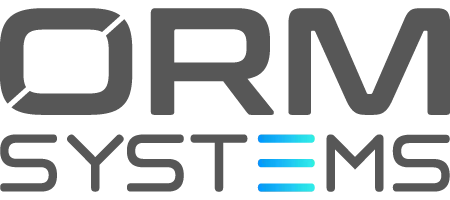

 +1 (281) 747-5957
+1 (281) 747-5957






